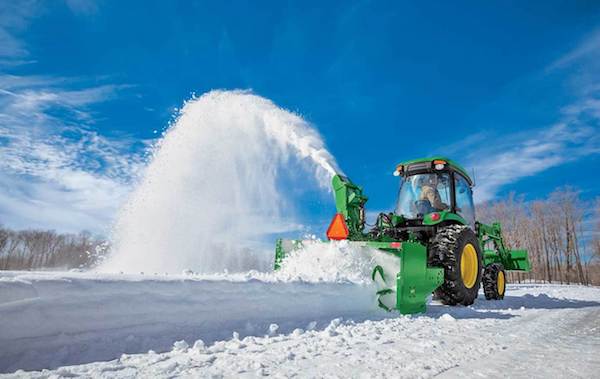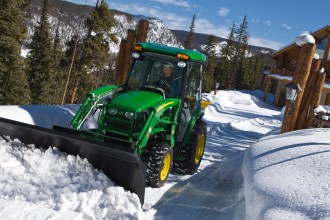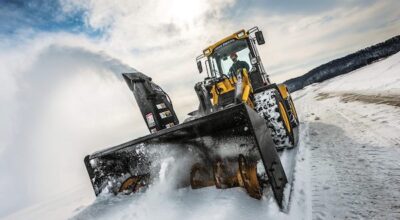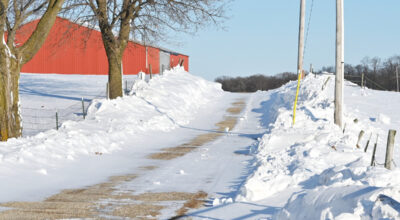Winter can be a long, daunting season and in order to make the most out of your John Deere equipment throughout these months, there are certain steps you need to take. Although preparing for winter can take a certain amount of time and effort, it is well worth it in the end when your machinery is operating smoothly in any type of weather.

Let’s take a look at some tips you can take into account as you are preparing for winter with your John Deere equipment.
- First off, it is important to ensure that you are using winter-grade fuel – this is necessary when temperatures drop below 32 degrees Fahrenheit. This will make certain that in cold weather operations, your fuel will not freeze.
- Check your grease zerks daily. Keeping points well-greased can help repel moisture and dirt, and can prevent rusting and freezing.
- Start treating biodiesel fuels with John Deere Premium Biodiesel Fuel Conditioner when temperatures drop below 41 degrees Fahrenheit. At temperatures below 32 degrees Fahrenheit, use B5 or lower blends and use only winter-grade petroleum diesel fuel at temperatures below 14 degrees Fahrenheit.
- Maintain your other fluids by referring to your operator’s manual for proper diesel engine oil and engine coolant requirements.
- Consider utilizing John Deere Premium Diesel Fuel Conditioner (winter formula) to treat non-winter-grade fuel when the temperature falls below 32 degrees Fahrenheit.
- Always check for water and residue buildup, which may be more of a problem as condensation builds up during the winter months. Remember – water will settle at the bottom, so allow fluids to sit for several hours or overnight. To check for water, drain a small amount of fluid from tanks, reservoirs, and oil pans.
- Load-test your batteries to ensure that they are ready to perform before you start your engine.
- Always inspect your rubber equipment. Because rubber becomes harder and more brittle in cold temperatures, it is more prone to cracking and breaking apart in cold weather. Look through your rubber tires, tracks, hoses and belts for cracking and dry rot before every operation.
- Always check your tire pressure. When the temperature drops, the pressure in your tires may change, meaning you’ll want to be sure they are adequately filled before your next operation. Adhere to the guidelines as listed on the sidewall of your machine.
- Allow your machine fluids to warm up before operating your machine at maximum speed.
If you have any questions about preparing for winter with your John Deere equipment, contact your local John Deere dealer.
If you enjoyed this post or want to read others, feel free to connect with us on Facebook, Twitter or Pinterest!


